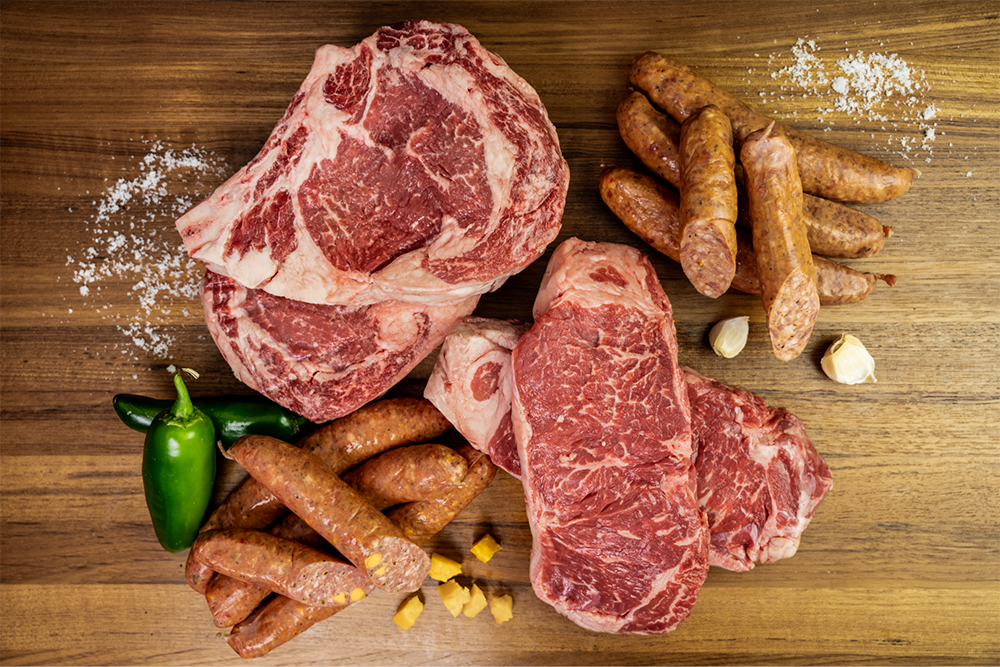Bagley Farms Meat Market Edwardsville IL: Your Best Destination for Regional Meat Option
Bagley Farms Meat Market Edwardsville IL: Your Best Destination for Regional Meat Option
Blog Article
Reveal the Art of the Butcher's Cut in a Modern Meat Market
In the ever-evolving landscape of modern meat markets, the butcher's cut has actually transcended its standard origins, combining old-time craftsmanship with modern methods. What truly sets the contemporary butcher apart is their capability to forge a much deeper link in between customers and the beginnings of their meat.
Advancement of Butchery Methods

The mid-20th century saw butchery methods better refined by clinical understandings right into muscle mass biology and meat aging, enhancing both inflammation and taste. Technologies like vacuum packaging and refrigeration expanded item shelf-life, allowing butchers to diversify offerings and boost quality assurance. This duration likewise marked the increase of specialized equipment, such as band saws and meat slicers, which boosted precision and performance in meat handling.
Computerized systems currently aid in monitoring animal provenance and optimizing cuts to satisfy details client preferences. Furthermore, a resurgence in artisanal butchery has actually emerged, mixing traditional abilities with modern expertise to provide to consumers looking for moral and sustainable meat alternatives.

Understanding Meat Cuts

Recognizing the complexities of meat cuts is important for both butchers and consumers seeking quality and worth. For butchers, accurate cuts show skill and respect for the craft, making certain very little waste and optimum yield.
The primary classifications of meat cuts consist of primitive, sub-primal, and retail cuts. Butchers after that break these down even more right into sub-primal cuts, prior to lastly generating retail cuts available to consumers, like ribeye or tenderloin.
Understanding muscle mass structure is crucial; muscles used a lot more often by the pet tend to be harder and are best suited for slow cooking approaches, while less-used muscular tissues, like those discovered in the loin, are much more tender and perfect for cooking or roasting. Knowledge with these distinctions encourages customers to make educated selections, improving their culinary endeavors.
Picking High Quality Meat
Choosing the appropriate meat entails more than just choosing a visually attractive item from the screen. The art of selecting visit this page quality meat calls for a discerning eye and knowledge of certain characteristics that symbolize freshness and excellence.
Second of all, consider the marbling, which describes the white flecks of fat within the muscle. Correct marbling is a key indication of tenderness and flavor, as it thaws throughout cooking, boosting the meat's juiciness. Remember, higher marbling commonly correlates with premium top quality cuts, such as USDA Prime.
Structure is another critical factor; meat needs to really feel strong to the touch, not slimed or overly soft. In addition, be conscious of the fragrance. Fresh meat ought to have a tidy, neutral smell, free from any type of sour or off-putting smells.
Pairing Cuts With Cooking Techniques
Efficiently coupling cuts of meat with the proper food preparation methods is vital for achieving optimum flavor and texture. These methods boost the meat's natural flavors and make sure a juicy coating.
Alternatively, harder cuts like brisket and chuck roast are abundant in collagen, which damages down into jelly when prepared gradually. These my blog cuts are perfect for braising or slow roasting, permitting the meat to tenderize in time and develop deep, complex flavors. Cuts such as short ribs and pork shoulder fare well with slow-cooking methods, where expanded cooking times transform their durable appearances right into delicious recipes.
Lamb shanks and oxtail, which require extended food preparation to soften, are best candidates for cooking or slow-moving simmering. These techniques coax out rich, hearty tastes while maintaining wetness. By comprehending the one-of-a-kind qualities of each cut, cooks and home cooks alike can elevate their cooking productions, making certain each meal is both satisfying and unforgettable.
The Butcher's Duty Today
Browsing the progressing landscape of the modern meat market, the butcher's function today expands beyond mere preparation of cuts. Contemporary butchers are culinary craftsmens, teachers, and supporters for lasting practices. They link the space in between the farm and the fork by making sure ethical sourcing, understanding pet husbandry, and from this source prioritizing transparency in the supply chain. This change reflects the growing customer demand for quality over quantity, where provenance and animal welfare are extremely important.
In enhancement to crafting precise cuts, butchers currently engage directly with clients, offering cooking recommendations and tailoring choices to fit specific needs and preferences. Their expertise in meat aging, marbling, and flavor profiles equips customers to make informed decisions, boosting their culinary experiences. This tailored solution exemplifies the butcher's progressing duty as a relied on consultant in the kitchen.
Additionally, butchers are pivotal in decreasing waste, utilizing whole pets to develop varied items such as sausages and stocks - bagley farms meat market edwardsville il. This comprehensive strategy not only appreciates the animal however likewise aligns with contemporary sustainability goals. In this way, the modern-day butcher personifies both practice and technology, adapting to an ever-changing market while protecting the creativity and stability of their craft

Final Thought
Proficiency in comprehending varied meat cuts and high quality indications empowers butchers to supply enlightened referrals, aligning certain cuts with optimal cooking techniques. By recognizing historical techniques while welcoming modern demands, the butcher's role stays vital in today's innovative meat market.
Report this page